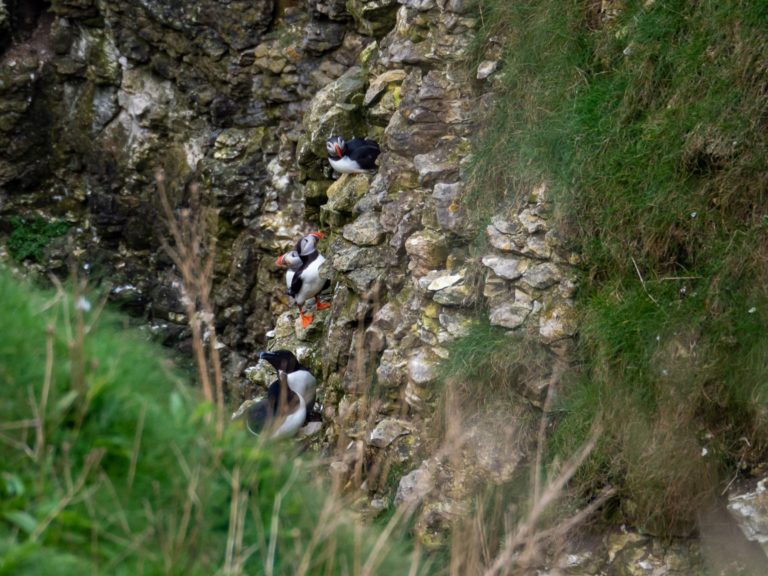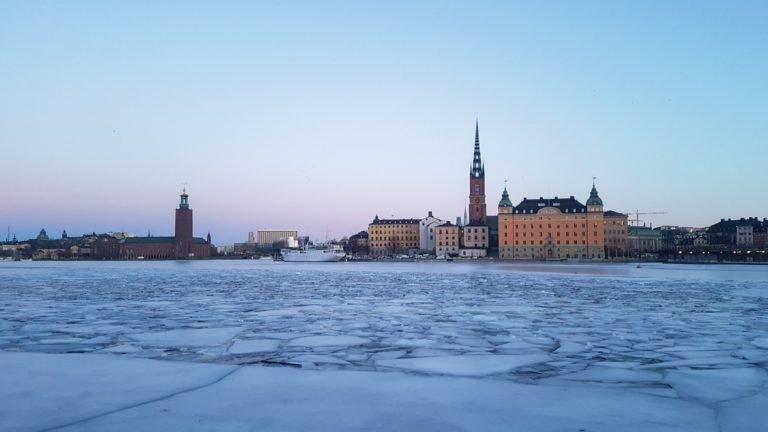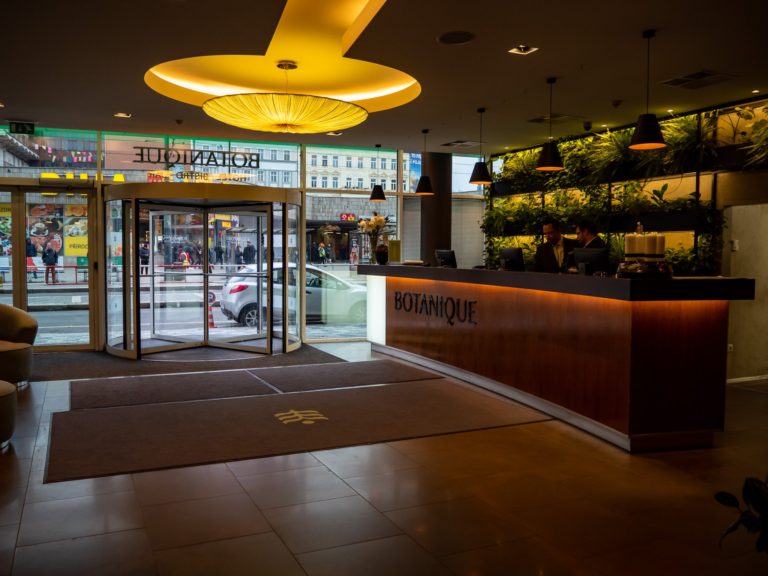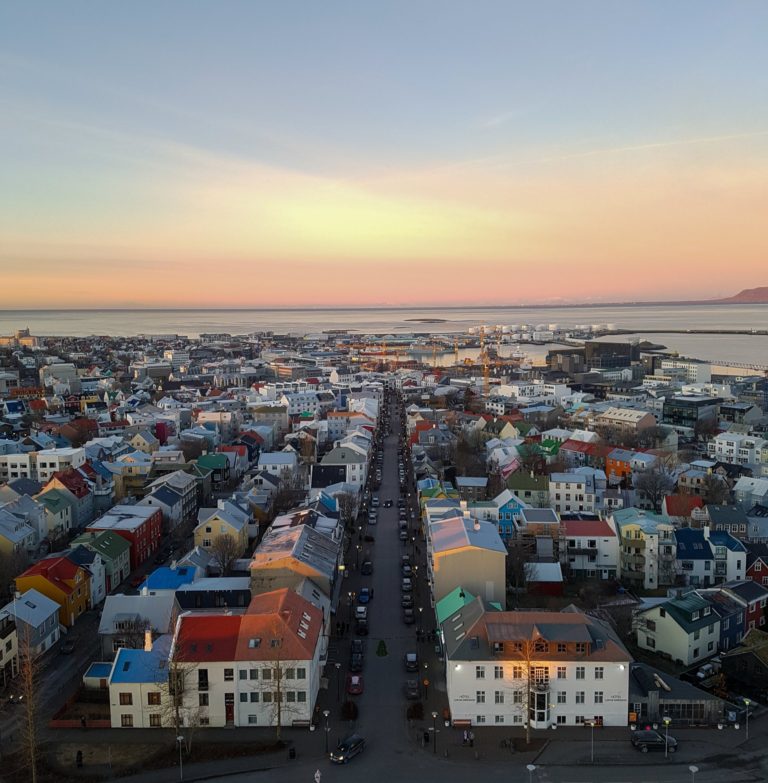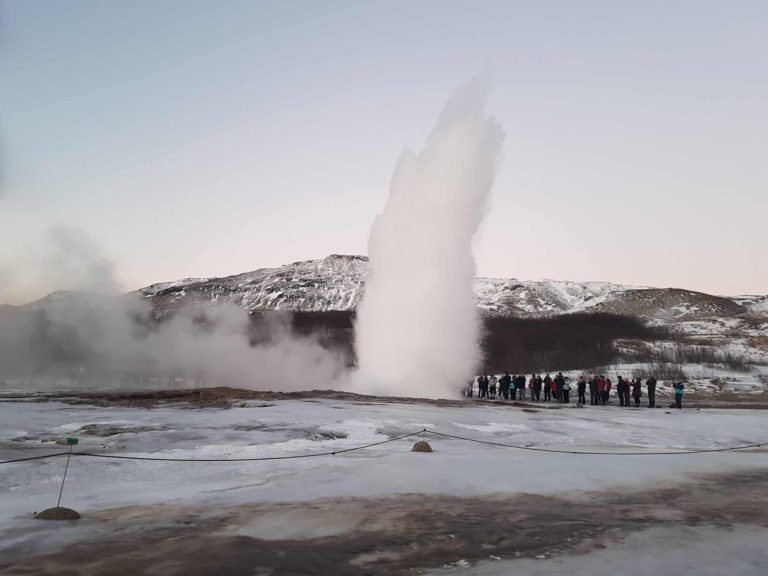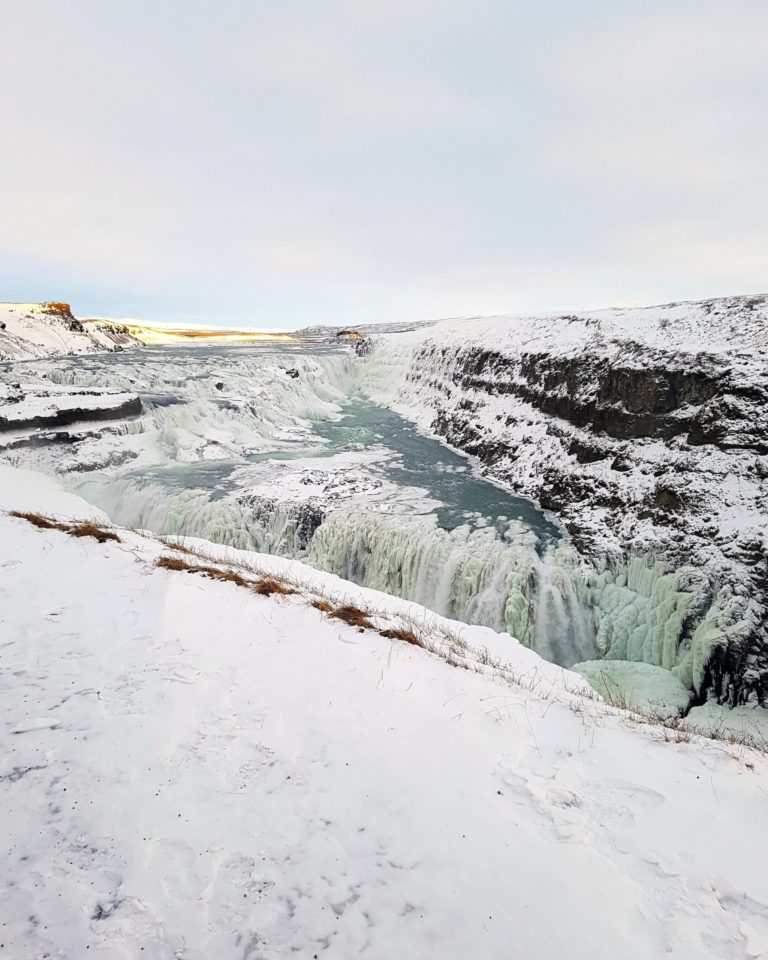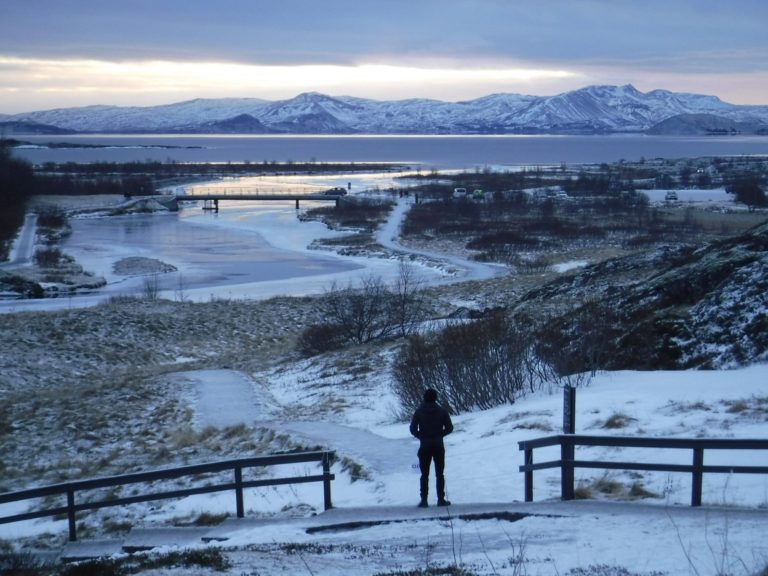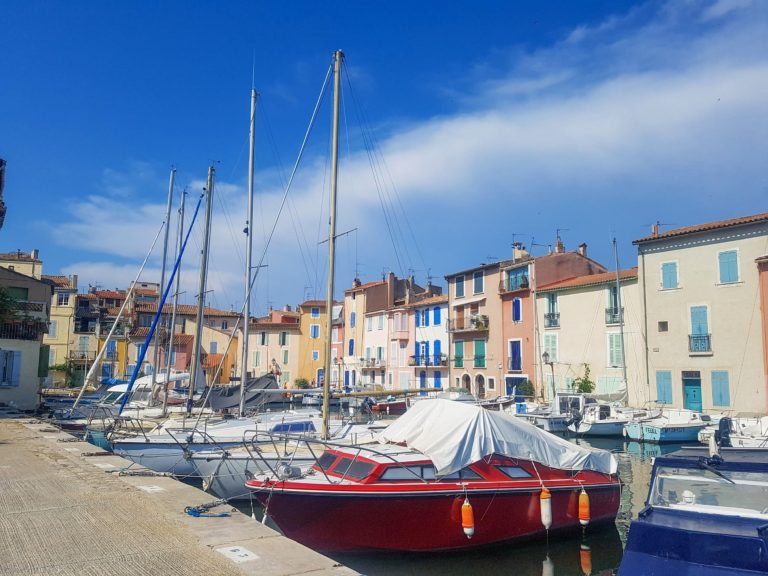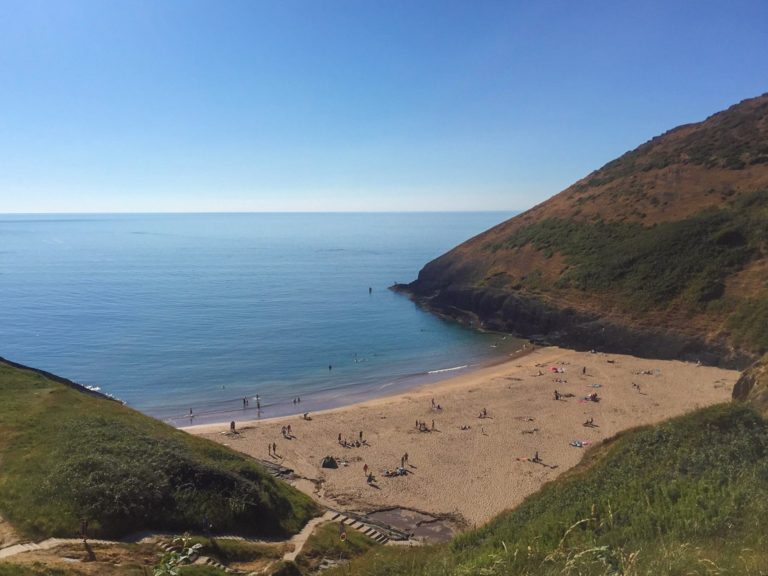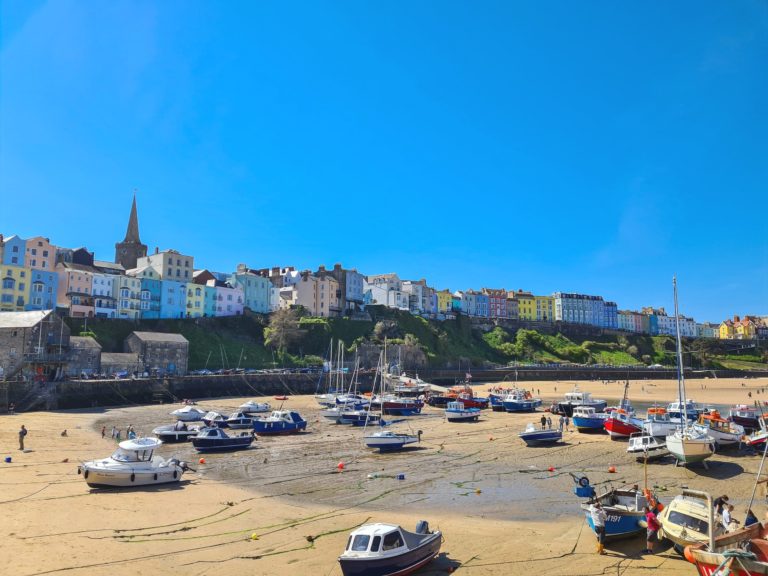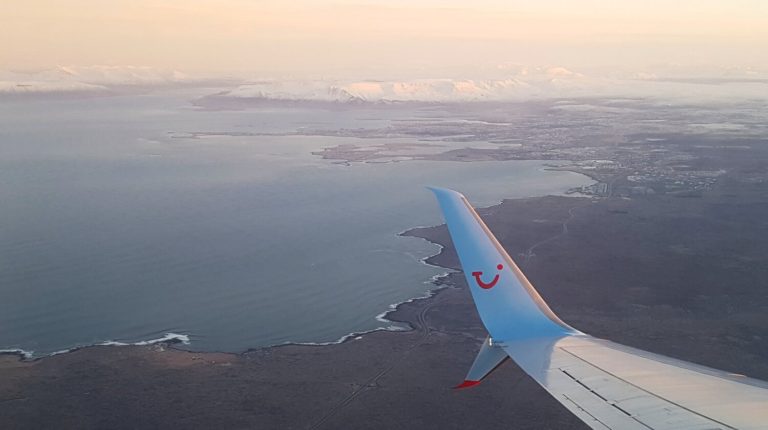Where and when to see Orca, Whales, Dolphins (+ other Wildlife) in Orkney
A complete guide to Orkney Orca, Whale and Dolphin watching spots, as well as other wildlife you can see in the Orkney Islands, Scotland.

This post may contain affiliate links, which means we might earn a small commission on anything purchased through these links at no extra cost to you. Learn more on our disclaimer page.
Due to its northerly location, nestled where the North Sea, Norwegian Sea and Atlantic Ocean meet, the Orkney Islands provide pivotal shelter for lots of migratory (and not-so-migratory) whales and dolphins (known as cetaceans). If you’ve looked around our website, you’ll have picked up on the fact that we’re huge marine wildlife fans. One of our favourite activities is whale and dolphin watching and Orkney has provided some of the best sightings of whales and dolphins that we’ve had in our lives. In this article, we’re going to break down exactly where the best places to see cetaceans in Orkney are, as well as provide a complete list of other wildlife that can be spotted in the Orkney Islands.
Whale watching in Orkney at a glance

The quick answer:
The best place to see orca, whales and dolphins in Orkney is from the land. Hoxa Head (South Ronaldsay), Marwick Head and Scapa Flow (West Mainland) are all popular whale watching spots in Orkney’s Mainland, while Catnick Head (Hoy), Noup Head (Westray) and North Hill (Papa Westray) are some of the best places to see orca in the Orkney Islands. Joining a wildlife tour is a great way to maximise your chances of orca and whale sightings. The best time to see orca in Orkney is in the Summer months of May to September, with peak sightings occurring between May and July.
Read on to find out how you can see orca, dolphins, porpoises and whales in Orkney by yourself!

Map of the best places to see cetaceans in Orkney
What kind of whales and dolphins can you see in Orkney?
Historically, more than 20 species of cetacean have been spotted around the Orkney Islands. Some species are a lot more common than others, with certain types of whale and dolphin returning to Orkney regularly. Some species of whale come incredibly close to Orkney’s coastline, while others prefer deeper water and are more elusive. Dolphins and porpoises can be seen frequently around the Orkney Islands too.
The main species of whale that are spotted around Orkney include Minke and Long-finned Pilot Whales, with Humpback, Sperm and Fin whales appearing intermittently. Porpoises are commonly sighted all year round, while several species of dolphin can be seen in Orkney too. The main species of dolphin you can see in Orkney include Risso’s, Common, Atlantic White-sided and White-beaked dolphins, with Bottlenose dolphins appearing sometimes. Orca are also seen frequently in Orkney.
Here’s a full list of cetaceans that have been spotted in Orkney throughout the years:
- Minke whale
- Long-finned pilot whale
- Humpback whale
- Sperm whale
- Sei whale
- Fin whale
- Blue whale
- False killer whale
- Beluga whale
- Narwhal whale
- Northern bottlenose whale
- Cuvier’s beaked whale
- Sowerby’s beaked whale
- Orca (Killer Whale)
- Risso’s dolphin
- Common dolphin
- Bottlenose dolphin
- Atlantic white-sided dolphin
- White-beaked dolphin
- Harbour porpoise
We’ve spent two of the most recent summers in Orkney. Using the Facebook Page and Sightings Chat (more info on these below in the Resources section), we’ve been lucky enough to see two pods of orca (with babies), a minke whale, several pods of Risso’s dolphins (also with babies), Atlantic white-sided dolphins, bottlenose dolphins and harbour porpoises. We’re going to go into more detail about the best places to see whales and orca in Orkney later in this article.

Are there orca in Orkney, Scotland?
Yes, there are orca in Orkney! You may have recently seen BBC’s David Attenborough documentary, Wild Isles, which showcased orca hunting seals off the coast of Shetland. Many people are also surprised to discover that Orkney is one of the best places in the world to spot orca.
There are actually two populations of Scottish orca: a West Coast Community and a Northern Isles Community. Most orca sightings occur in the Orkney Islands and Shetland Islands, while they can sometimes be seen from the North Coast of mainland Scotland too. The area from John O’ Groats to Duncansby Head is a popular Scottish mainland site for orca sightings but has fewer visiting cetaceans than in the northern islands. Sightings in other parts of Scotland, including the Small Isles, Hebrides and Skye, do occur but are rarer too.
Despite their alternative moniker ‘Killer Whales‘, orca are actually the largest member of the dolphin family. They grow to an average of 7 metres (21ft) long, although the biggest ever recorded orca was 9.6 metres (30ft) long. The ocean’s apex predator, orca have a ruthless reputation but are actually complex and characterful individuals. No two pods are the same and each pod has its own hunting techniques. Orca go by a few different names. The nickname ‘killer whales’ is believed to originate from the Basque whalers in the 18th century, while their scientific name, orcinus orca, means whale of the kingdom of the dead. Despite their deathly reputation, orca have never been known to attack humans in the wild. The only incidences have occurred in confinement and are further proof that orca should not be kept in captivity
You need to be extremely lucky to see orca in the wild but, in this article, we’re going to tell you exactly where and how you can see orca in the Orkney Islands, as well as provide all the information you need to successfully go dolphin and whale watching in Orkney.

Orkney orca sightings
A system for visually identifying orca was developed in the 1970s by Dr Michael Bigg and colleagues and is used today by researchers. Using photos, individual orca can be identified and ‘named’, with a unique identification number. Scientists and researchers are then able to track the movement of specific orca and pods, gaining a better understanding of their habits.
Orca are matriarchal. The children stay with their mothers, even if they have their own offspring. Strong bonds hold the pod together, even after the death of the matriarch. It’s for this reason that Scotland’s orca are named after the pod’s matriarch. For example, a pod known as the 64s is named after the matriarch, 64.
Some pods regularly return to Scotland, while other individuals are seen sporadically. Pods known as the 64s, 65s and 27s make up part of the Northern Community and are seen more frequently in Orkney, while the 15s have been spotted on and off with the 29s less regularly. The 19s pod have been spotted off Shetland and Orkney, as well as Iceland, while the 64s and 65s have never been spotted in Iceland. The 27s pod have previously been spotted off the Faroe Islands and Iceland and is the pod of orca featured in BBC’s Wild Isles. A full catalogue of Scotland’s orca and information on their pods was published by researchers in 2021 and can be found here.

When can you see whales, dolphins and orca in Orkney?
Although cetaceans can be seen year-round, Summer is whale watching season in Orkney. The best time of year to see orca in Orkney is between the months of May to September. Dolphins and porpoises can be seen more consistently throughout the year but peak whale sightings occur between May and July, which is also the best time to see orca in the Orkney Islands.
Some people wonder what time of day is best to see orca, whales and dolphins, but this can depend on a number of factors, including weather and tide times. There is no official best time to see dolphins and whales in Orkney, as wild animals come and go as they please and are unpredictable. Having said that, we’ve typically found that cetacean activity increases at dawn and dusk. The best time to see orca in Orkney is when the sea is flat and, if the conditions are right, whales and dolphins can be seen at any time of day.

Is it rare to see Orca in Scotland?
Shetland and Orkney are without a doubt the best places in Scotland (and the UK) to see orca. Although possible, you’d have to be very lucky to see orca from other parts of the UK. According to experts, over 90% of orca sightings in the UK happen in the Orkney and Shetland Islands. It’s really the place to be for orca activity in the UK.
Orkney has a rich history that is intertwined with whales. The Orkney Islands have been inhabited for about 8800 years and historically Orcadians would have considered a beached whale a blessing. Whale parts have been used by humans for thousands of years and evidence of whale-related products have been found by archaeologists in Orkney. A bowl carved from the vertebrae of a whale was found in the Neolithic village of Skara Brae and is thought to date back to between 3100 and 2400 BCE. While other 5000-year-old whalebone artefacts can be seen on display in the museum onsite.
Over the years, whaling became increasingly popular in the Orkney Islands. As such useful resources, whales were seen as commodities and hunted whenever they appeared. Whaling drives – where whales are surrounded by boats and driven onto the shore or into the shallow water, where they are then killed – were organised by the community and the blubber and oil were shared. The largest drive recorded totalled 450 cetaceans in Westray in 1843. Commercial whaling was banned in 1986 and the last organised whale drive in Orkney took place in July 1891 when 114 pilot whales were killed in two bays, one of which was Inganess Bay, where Kirkwall’s airport now stands. Today, Orcadians help to protect the area’s cetaceans from threats including strandings and work hard on conservation initiatives to protect them.
Modern threats facing Orkney’s cetaceans include conflicts with fisheries, which can lead to vessel strikes, accidental capture in fishing gear, depleted food sources and habitat degradation. Pollution is another huge issue, with waste from fish farms and plastic pollution leading to injury and often death. It’s now believed that half of the world’s population of orca are doomed to extinction due to toxic and persistent pollution of the oceans, with the UK’s population most at risk.
It’s not totally clear how many orca are left in Scotland but it’s clear the UK population is threatened. It’s thought the West Coast population is in decline and a lack of recent sightings has raised fears that just two of eight remain. Distressingly, one of the West Coast pod was found dead due to entanglement in fishing gear in 2016, while another member was washed up with one of the highest levels of ingested PCB (plastic) ever recorded. Spotting orca on Scotland’s west coast is therefore far rarer than spotting orca in the Orkney and Shetland Islands. But the Scottish Northern Isles population of orca is not safe either. In 2021, a member of the famous 27s pod was found dead on Papa Westray, having been entangled in fishing gear. Cetaceans who become entangled are thought to have excruciatingly painful deaths as they slowly drown.
But it’s not all doom and gloom. Orca 64 had a new calf in 2019, while a new calf was spotted with the 27s pod at the end of 2022, giving hope for the future of both pods. Many local people are working really hard to help Orkney’s orca and other cetaceans too. The British Divers Marine Life Rescue and Scottish Marine Animal Strandings Scheme can be called to assist with whale strandings in Orkney, with the most recent successful rescue floating a minke whale back out to sea from Waulkmill Bay, near Orphir, in March 2023. Locals also helped save a beached orca in 2021, while a stranded sperm whale in Shapinsay was re-floated back out to sea in a successful rescue attempt in 2019. A code of conduct for boat users is in place and the Orkney Marine Mammal Research Initiative (OMMRI) carries out research and sightings events to monitor Orkney’s cetaceans. With more research, awareness and protection, Orkney’s cetaceans can be better understood and conserved for future generations to enjoy sightings of too.
Read next: Let’s Talk About The Plastic Problem: Environmental Impacts of Plastic Pollution

How to see orca, dolphins and whales in Orkney
It is possible to see cetaceans from a boat, either on the ferry or on a tour, but the easiest and most common way to whale watch in Orkney is from the land. There are several areas where your chance of a whale or orca sighting in Orkney will be much higher, and there are also a few components that will help you maximise your chances:
- A good vantage point
- Calm sea conditions
- Patience and luck
We have a saying that we like to use when cetacean spotting:
“Everything looks like a whale or dolphin until you see one!”
– Lucy and Dan
Every wave can look like a dorsal fin and you’ll be constantly tricking yourself into thinking you’ve spotted something, just to lose sight of it two seconds later. In rough weather especially, whales and dolphins can get lost behind high waves, making cetacean spotting much harder. But when you do spot a cetacean it’s often unmistakeable. Going out in calm weather means the sea is flatter and you’ll have a much better chance of spotting something if it is out there. Not to mention, the better the weather, the longer you’re going to want to stay out whale watching in the first place. Higher ground can give you panoramic views to scan the ocean from, which is good news for Orkney orca and whale watchers, as the whole coast is made up of tall, rugged cliff faces. And finally, you have to have patience. You might be lucky and spot a whale or dolphin immediately but sometimes it’s just not meant to be, despite your efforts.

The best places in Orkney to see orca, whales and dolphins
The best place for whale watching in the Orkney Islands is from the land. It is possible to see whales, dolphins and orca from a boat, but there are no dedicated whale watching tours as cetacean spotting is too unpredictable.
Most tourists to Orkney choose to stay on the Mainland. As this is the largest area of land in Orkney, it has the most whale watching spots to choose from. Harbour porpoises are true to their name and can generally be seen in harbour areas and shallower channels, while dolphins can be seen all around Orkney, often being easier to spot in large bays. Whales are migratory and are typically seen off the west coast of Orkney’s Mainland. The east coast of the Mainland has more low-lying sandy areas, which makes sightings fewer and far between, although still possible. And the north coast also has fewer sightings, although the nearby Isle of Shapinsay does have orca sightings irregularly.
The sounds and inshore areas are the best places to see orca in Orkney. Killer whales are often seen in the Switha Sound (the area of water between Switha and South Ronaldsay) and into Scapa Flow (the area of water between Orkney’s Mainland, Burray, Flotta and Hoy). Scapa Flow’s sheltered waters are the reason the area played such a vital role in World War II. Orkney was the main base of the British fleet in WWII and defensive positions were set up with the best outlooks over approaches to the islands. Thousands of years previously, Vikings moored their longships in Scapa Flow.
Those wondering where to see orca in Orkney should find out where to see seals, which are one of the main sources of food for the Northern Community. Orca activity is increased during common seal pup season, which is in Summer (grey seals have pups in Autumn). Orca have been observed hunting seals in the shallower waters around the Orkney and Shetland Islands. Orkney’s northern islands, including Sanday, Westray and Papa Westray, are all good places to see migratory whales and orca too.

Where to see orca, whales and dolphins from the land in Orkney
Here are the best places to see orca, whales and dolphins from the land in Orkney.
1. The Pentland Firth Ferry
The Pentland Firth is a stretch of water between mainland Scotland and the Orkney Islands. Despite its name, the Pentland Firth is not a firth, but a strait. Unless you fly, you will have to cross from mainland Scotland to Orkney via ferry. One route runs from Scrabster to Stromness, while the Pentland Ferry crosses from Gills Bay, just west of John O’ Groats, to St Margaret’s Hope on South Ronaldsay. The Pentland ferry is a family-run business and a more eco-friendly way to get to Orkney than flying. From South Ronaldsay Island, you can drive over Burray Island to Orkney Mainland (the largest of the Orkney Islands), via a series of four causeways known as the Churchill Barriers.
Although sightings are never guaranteed, crossing the Pentland Firth by ferry puts you right in the middle of the body of water where cetaceans are often spotted in Orkney. It’s worth heading to the top deck or bagging a window seat, and keeping your eyes peeled for dolphins, porpoises and orca. We’ve heard people have had some incredibly close encounters with orca from the Pentland Firth Ferry, but we’ve only ever seen flashes of porpoises on our crossings. The ferry crossing can sometimes be a bit rough, but if you get a clear day, the Pentland Firth can be one of the best places to see cetaceans in Orkney.

2. Hoxa Head (South Ronaldsay)
Due to its tall cliffs with sweeping ocean views, Orkney’s headlands are one of the best places to whale watch from the land in the UK. Situated on the most easterly point of South Ronaldsay, Hoxa Head is a wide headland that offers panoramic views of the channel between the Pentland Firth and Scapa Flow, over towards the islands of Flotta and Hoy. Hoxa Head is littered with World War II gun batteries and features a 1.7-mile (2.7km) circular coastal trek. Once used by the navy to scout out enemy submarines, the walk now gives you one of the best vantage points for cetacean watching in Orkney.
The walk starts from the (free) car park and is clearly marked. Look out for whales and dolphins in the channel as you walk around the cliff edge. The two batteries here are the Hoxa Battery and Balfour Battery. Entering these buildings is unadvisable and at your own risk, as they are structurally unsafe. The final part of the path follows an agricultural track, which can be muddy at times, but leads to the highest point of the walk. This is actually the spot where we saw our first-ever Orkney orca! We’ve also seen Risso’s dolphins, Atlantic white-sided dolphins and porpoises from Hoxa Head’s coastal walk. It’s our favourite whale watching spot in Orkney.

3. Brough of Birsay (West Mainland)
The Brough of Birsay is actually a small uninhabited island off the northwest coast of Orkney’s Mainland. It is home to a lighthouse and well-preserved ruins of Pictish and Norse settlements. Due to its westerly position, it provides sweeping views of the Norwegian Sea. Migratory whales are often seen in this body of water and sightings of dolphins are also common here. Access to the island is only possible at low tide when a long causeway is exposed that you can walk across. In the summer months, keep an eye out for puffins, who nest in the cliffs on the island.
Back on the Mainland, the town of Birsay is home to the Birsay Earl’s Palace and the charming Birsay Bay Tearoom. Seals can also commonly be seen in the bay, which reveals a sandy beach at low tide. The large car park is free but fills up quickly in summer.

4. Marwick Head (West Mainland)
3 miles south of Birsay, Marwick Head Nature Reserve is a stretch of coastline protected by the RSPB and one of the best places to see whales in Orkney. Featuring a dramatic cliff-top walk, Marwick Head (meaning ‘shallow bay’ in Old Norse) is home to thousands of seabirds, including guillemots, razorbills, kittiwakes, and sandpipers. Puffins can be seen burrowing in the 90-metre (295ft) tall cliffs between May-July and multiple breeds of bunnies can be seen playing on top of the cliffs. On a clear day, you can see as far as the Old Man of Hoy, while the sweeping views of the ocean provide a great vantage point for whale watching.
The tower you can see here is the Kitchener Memorial, a big stone tower built in 1926 in memory of Lord Kitchener, the WWI Minister for War. He, and 736 men, died onboard HMS Hampshire when his ship hit a mine just a few miles offshore from Marwick Head in 1916. You can easily access the memorial tower from the Kitchener Memorial car park.
There are a few lovely walks in this area. You can walk to the fishermen’s huts at Sand Geo, or follow part of the coastal path that winds along the headland and looks out to sea. Whales are often spotted along the coast here and it’s actually where we had our first successful minke whale sighting. Dolphins can also be spotted here too, sometimes coming super close to the cliffs.

5. Yesnaby Cliffs (West Mainland)
Further south, about halfway down the west coast of Orkney Mainland, is a stretch of coast known as Yesnaby Cliffs. During strong westerly gales, this area offers stunning scenes of huge waves crashing against the cliffs. This is another area with a beautiful coastal walk, which features sea stacks, blowholes and geos (inlets). The path leads to the impressive Yesnaby Castle, a two-legged sea stack, while Yesnaby Gun Battery is situated right by the car park. Cetaceans you can see from Yesnaby include dolphins and porpoises, while whales are often spotted here, particularly minke whales.

6. Scapa Flow (South Mainland)
We’ve already mentioned it, but Scapa Flow is without a doubt the best stretch of water to see cetaceans in Orkney. Due to its secluded nature, Scapa Flow provides protection for wildlife like fin, humpback and sperm whales, who have been known to swim far into the bay. Sadly, the sandy bottom of the bay has led to strandings in the past, but most cetaceans’ visits are incident-free.
Scapa Flow has an important history. During the First World War, in response to the build-up of the German Fleet, Britain decided that a northern base was needed to control the entrances to the North Sea and ships were deliberately sunk at the entrances of Scapa Flow. In the years that followed, two attempts to enter the harbour were made by German U-boats but neither was successful. At the end of the war, after the German defeat, 52 ships were scuttled (deliberately sunk), as an act of sabotage by a commander who refused to let German ships be seized by the British. It was the single greatest loss of warships in history and the nine German sailors killed that day were the last to die during World War I.
The sunken ships now create the perfect habitat for diverse marine life, making Scapa Flow one of the best diving sites in the world. It’s possible to SCUBA dive and dry suit snorkel around the wrecks of Scapa Flow. Harbour porpoises have also been known to gather in south Scapa Flow in Autumn, while the bay is frequently visited by killer whales. Scapa Beach gives great views out into the bay and, if you’re lucky, can be one of the best places to see orca in the Orkney Islands. We saw bottlenose dolphins from Scapa Beach once, and about 75% of our personal cetacean sightings in Orkney have happened in the Scapa Flow area.

7. Stromness (West Mainland)
Located in the southwest, Stromness is the second-most populous town in Orkney after Kirkwall. This port town was once regularly visited by whaling fleets and many of the houses here are still decorated with whalebone artefacts. Crossing from Stromness to Hoy or Scrabster via ferry can offer sweeping views of the ocean from which many cetaceans can be spotted. The Ness Battery is located on the southern tip of the headland by Stromness and provides a great vantage point to see whales and dolphins. You can also join a guided history walk here to learn more about the Battery and what life was like for the men who manned the guns during the war.

8. Catnick Head (Hoy)
The second largest island in Orkney, Hoy is a great place to see whales and dolphins. Named from the Old Norse word Háey, meaning ‘high island”, the Isle of Hoy features sweeping moorland and huge glacial valleys. The walk from Rackwick Bay to the Old Man of Hoy, a 137 metre (449ft) tall sea stack, is a must-do activity and offers incredible ocean views. While the Dwarfie Stane in the centre of the island is a megalithic chambered tomb that dates back around 5000 years.
In the south of the island, Catnick Head is the best place to see orca on Orkney’s Isle of Hoy. Surrounded by the sea, the headland features an active 19th-century lighthouse that overlooks the Pentland Firth and Sound of Hoxa. Cantick Head Lighthouse Self Catering Cottage can be booked as accommodation and is arguably the best place to stay to see cetaceans on Orkney, with orca, whales and dolphins often being seen from this spot.

9. Flotta
Flotta is a small island near Hoy that sits at the joining of the Pentland Firth and Scapa Flow. Due to its central location, Flotta makes a great place to see Orkney’s cetaceans, with orca frequently being spotted around the island. An 8-mile (13km) route around the southern end of Flotta passes ruins of an old naval cinema, various gun batteries, including the Buchanan Battery on the east coast, and Stanger Head Port War Signal Station. During both world wars, Flotta was an important base for thousands of servicemen and women. Now it can be visited by ferry from Houton and is home to a huge oil terminal, as well as a small Heritage Centre and Museum.

10. Noup Head (Westray)
Westray is the largest of Orkney’s northern isles and one of the best places in Orkney for wildlife. The most westerly tip is home to Noup Cliffs Nature Reserve which is an RSPB protected area. Thousands of seabirds settle in this area, including Arctic terns, gannets, guillemots and kittiwakes. Noup Head is also one of the best places to see puffins in Orkney.
You can follow the spectacular 4.25 mile (7km) long cliff-top walk along 76 metre (249ft) tall cliffs that give great views out to the ocean, where whales and orca are often seen. The Noup Head Lighthouse stands tall on the headland. Dating back to 1898, this is one of the best places to see orca in Orkney’s northern islands.

11. North Hill (Papa Westray)
Papa Westray, known to the locals as Papay, is a small island in the north of the Orkney Islands. It is another of the best places to see orca in Orkney due to its north-westerly location. The protected area RSPB North Hill is home to rare plants and birds, including Arctic terns and skuas. Whales, porpoises and dolphins, including orca, are often seen from the coast here.
Papay is accessible by ferry from Kirkwall and Westray, but the better way to arrive is by taking the shortest flight in the world from Westray. The island has a population of 80-90 people and is home to two of Orkney’s most important historical sites. The Knap of Howar is a 5700-year-old Neolithic farmstead that is older than the Pyramids of Giza, while the Holm of Papa Westray Chambered Cairn features graffiti that dates back to around 3000 BCE. The best way to see the island is to take a Papay Peedie Tour – a history, archaeology and wildlife tour with local guide Jonathan. We did this and it’s fab.

The best resources for orca and whale watching in Orkney
The first thing you should do before embarking on a whale watching trip to Orkney is join the Orkney Cetacean Facebook Group. Sightings are posted regularly and can give you a good idea of the common locations cetaceans are spotted in Orkney (spoiler, we’ve listed them above), as well as live whale and dolphin activity. You can also follow the Orkney Marine Mammal Research Initiative (OMMRI) Facebook Page for more Orkney cetacean information. If you’re a keen bean (like we are), you can message them and ask to be added to the Orkney Cetacean Sightings Telegram Group, a very similar group chat to the one the BBC team used to locate a pod of orca off Shetland while filming the new Wild Isles series. You can also visit their website, Orkney Marine Mammal Research Initiative, and report sightings here.
Sea Watch Foundation’s Recent Sightings website page is also very useful, although we’ve found it has less frequently registered sightings than the groups we’ve listed above. Their annual Orca Watch is a great citizen science event where they collect as much data as possible on the whales, dolphins and porpoises in the waters around Caithness and North Sutherland, Orkney and Shetland with the help of volunteers. The 2025 Orca Watch dates are from Saturday the 24th of May to Sunday the 1st of June.
There’s also an annual Orkney Nature Festival, which celebrates Orcadian wildlife with photography classes, guided walks and events. The 2025 Orkney Nature Festival dates are from 12th May to the 18th May.
The Whale and Dolphin Conservation website also has lots of valuable information about cetacean conservation in the UK. And it’s good to be familiar with the Scottish Marine Wildlife Watching Code too.
The Scottish Killer Whale Photo Identification Catalogue (2021) is a great public resource put together by a team of researchers in Orkney and Shetland and contains lots of information about individual orca in the Orkney and Shetland Islands.
It’s also worth thinking about the kit you might need for spotting orca, whales and dolphins in Orkney. A good pair of binoculars is possibly the most important item to carry when whale watching. We’d recommend something with a strong magnification and a wide field of view. We use the Nikon Prostaff 3S 10×42 Waterproof Binoculars with a 7° field of view (Browse UK | Browse US). And to capture those amazing memories, it’s worth investing in a good camera with a telephoto or zoom lens. Here are our recommendations of the best cameras for wildlife photography:
- DSLR: Nikon D7500
- Full Frame: Sony A7 III
- ASPC: Fujifilm XT4
- ASPC: Canon EOS R7
- Micro Four Thirds: Olympus OM-D E-M10 Mark IV (our camera)
Top tip: Please be really careful if you’re driving to a cetacean sighting location following an online alert. It can be easy to get swept up in the adrenaline, but Orkney’s roads can be narrow and windy. It’s also a good idea to have a navigator with you as it’s illegal to use your phone while driving and you’ll want the most up-to-date sightings information when you’re out and about.
Read next: The Best Wildlife Photography Camera Settings

The best orca and whale watching wildlife tours in Orkney
Now you know how to see orca in Orkney on your own, it’s time to talk about tours. Because Orkney is still a fairly remote location, it’s not been ruined by over-tourism. This is great news for the wildlife there, but it does mean that tour options are slightly more limited than in more popular places around the globe.
As such, there are no whale watching tours in Orkney. This is because cetacean sightings are too unpredictable to run a dedicated tour for, and it helps to conserve the area for the species to thrive.
The only Wise accredited boat operator in Orkey at the moment is Orkney and Shetland Charters.
Ocean Trek are a local company endorsed by The Royal Yachting Association and the Maritime and Coastguard Agency.
John O’Groats Tours can also be taken from the Scottish mainland to Orkney, which offers passengers the chance to see seals, whales, dolphins, porpoises, arctic skuas, storm petrels, guillemots, puffins, razorbills and kittiwakes, as well as rugged cliffs and scenery in the Pentland Firth. An Orkney Islands Day Trip can also be a great way to see Orkney’s main sites, including the Stone Age site of Skara Brae, as well as offering wildlife spotting opportunities.
Those looking for a broader tour should consider this Orkney West Mainland Tour, which visits Scapa Flow, Yesnaby and Skara Brae (all of which are great cetacean spotting sites), before visiting the Ring of Brodgar, which dates back 4500 years.
Visitors looking for a fully immersive experience should consider joining a multi-day tour, which provides a great balance between history and wildlife spotting. Intrepid Travel offers a great 5-day itinerary around Orkney’s main islands. Other multi-day tours of Orkney include:
- Orkney and Northern Coast 5-Day Tour
- Orkney and The Far North 5-Day Tour from Edinburgh
- Orkney, Skye and the Far North 8 Day Tour from Edinburgh

What other wildlife can you see in Orkney?
Orkney is a wildlife-lover’s haven and there are plenty of other species of animal to spot, besides cetaceans. You may be wondering what other wildlife is on the Orkney Islands, so we’ve split this next section up by animal to make it easier to list the best places on Orkney to see each species.
Basking sharks
Basking sharks are the second largest shark, after the whale shark. They are known for their huge mouths, which they swim with open to scoop up plankton, their food source. Basking sharks have been spotted around the Orkney Islands fairly frequently. Whale shark season in Orkney coincides with whale and orca season, between mid-July to mid-September. Basking sharks can grow up to 10 metres (33ft) long and are identifiable by their large, triangular dorsal fin, which can be seen gliding above the surface. Basking Sharks in Orkney are most often seen from the Churchill Barriers, or around the outlying fish farms.
Seals
There are two types of seal in Orkney: Grey Seals (known to locals as Selkies) and Common Seals (also known as Harbour Seals). October to November is pup season for grey seals in Orkney, while June to July is pup season for common seals. Not to be confused with sea lions, seals have smaller flippers and wriggle around on their bellies when on land.
There’s mixed information online about how many seals are in Orkney, with some sources saying it’s believed that around 15% of the world’s seal population reside around Orkney, while others state it’s 15% of Scotland’s population of seals. Regardless, it’s clear you have a pretty good chance of spotting seals in Orkney. They can commonly be seen basking in the sunshine or playing in the shallows. Some seals have even been known to follow you in the water as you walk along the shore. Many visitors wonder where to see seals in Orkney and there are a few places where you’re almost guaranteed to see seals. On the Mainland, the Brough of Birsay and the Loch of Stenness by the Ring of Brodgar are great places to see seals, while the Holm of Papa Westray and Saviskaill Bay (Rousay) have large seal colonies too. You should always keep at least 50 metres away from a seal, as it’s very important not to disturb them, especially if they have a pup.

Otters
Otters may be cute and charismatic creatures, but they’re also incredibly elusive and mainly active at dawn and dusk. The best places to see otters in Orkney include Kirkwall, the Loch of Stenness, particularly around the Brig o’Waithe and Scapa Flow. There is a wildlife-watching hide just past the Barnhouse Settlement that overlooks the Loch of Harray, which is another great place to see otters in Orkney. Fair warning though, you’ll need to take a little patience and (DEET-free) mosquito spray with you. In the islands north of the Mainland, otters are most likely to be seen foraging along low-lying rocky coastlines on Eday and Sanday.
Birds
Puffins are small black and white seabirds with colourful bills and legs. In Orkney, puffins are known as tammie norries and spend most of their lives at sea. Puffins can be seen in Orkney between May to July when they burrow into the cliffside to raise a single egg. Many tourists wonder where to see puffins in Orkney, as they can be quite elusive. The best places to see puffins in the Orkney Islands include Castle o’Burrian and Noup Head (Westray), Noup Cliffs (Papa Westray), the Brough of Birsay and Marwick Head (Orkney Mainland).
Fun fact: A baby puffin is called a puffling.
Orkney is a great place to go birdwatching and has a great variety of seabirds. The great skua (known as a bonxie) can be found on Hoy, which is home to over 1400 pairs. Hen harriers, merlins, curlews and skylarks can also be spotted around the islands between April to late July. RSPB Hobbister and Cottascarth are two of the best spots for birdwatching in Orkney. Orkney is also one of the best places to see Arctic skuas in the UK. Unfortunately, this species is in decline but they can be found in breeding pairs in coastal moorland areas and RSPB reserves.
Short-eared owls are possibly the cutest bird in Orkney (along with the puffin). Known to locals as Cattys, these small owls have feline faces and can often be spotted on the top of fenceposts. Alternatively, Trumland, RSPB (Rousay) and Hoy RSPB Reserve are great spots for seeing short-eared owls too.
Both golden and white-tailed sea eagles have been spotted in Orkney. In 2018, a white-tailed eagle chick successfully hatched in Orkney for the first time in over 140 years, while a golden eagle couple nested in 2021 for the first time in 40 years. Both species nested on Hoy but the exact location was withheld to protect them.
Some tourists wonder: are there penguins in Orkney? There are no penguins in Orkney (all penguin species are native to the southern hemisphere), but the black and white razorbill can be found in the Orkney Islands. These birds, along with puffins, can sometimes be mistaken for penguins.
Read next: How to see Puffins at Bempton Cliffs

Read next:
How to see Puffins at Bempton Cliffs on the Yorkshire Coast
The Best Wildlife Photography Camera Settings
Let’s Talk About Ethical Wildlife Tourism
Check us out on social media!
